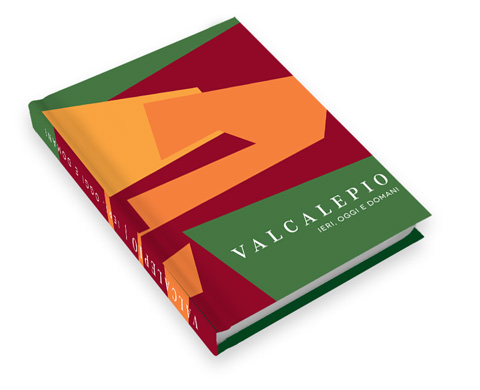C’era una volta in Valcalepio - 2020 News
Here we have a 56-pages history that explains through images what often would take hours and hours of discussions, explanations and tastings. It quickly and easily introduces the usually complicated and unappealing concepts that most of the time keep the consumers back.
Valcalepio: ieri, oggi e domani

The book you are going to download represents A History of Valcalepio.
The real objects of History are the men and the women making choices and creating their stories. It is one of this choices that permitted 40 year ago the birth of Valcalepio as a wine and as an oenological region. This is the story we decided to share with you and to reach the best result possible we chose to follow the memories of those who lived that period and took those decisions.
The central chapter of this book, Valcalepio Today deals with all the activities brought about in these last years by Consorzio Tutela Valcalepio to promote the Valcalepio brand.
We started the book telling you the stories of those who decided to believe in the dream of an oenology in Bergamo. We wrote a chapter showing you what we are doing in the present to promote Bergamo wine in Italy and across the world. We then wrote about what we expect from the future. What represents the future of Valcalepio are the wineries. Bergamo vignerons will write the future history of the wine in Bergamo and of Bergamo with their choices and decisions.
We wanted to tell you a story. It is the story of those men and women whose choices gave birth and permitted the evolution of a high-level oenology in Bergamo.
The fil rouge that unites all these stories is constituted by the respect for the soil and the deep love to the territory and to that cultural and non-mechanical practice that is wine production. Wine is a cultural product; it is the result of history and tradition and constitutes the perfect messenger of a territory. This is the reason why we love to call Valcalepio The Wine of Bergamo. In a glass of Valcalepio we see Bergamo, its territory, its castles, its churches, its hills, his traditional food, its men and its women.
Valcalepio: il vino dei Bergamaschi
As time goes by stories tend to loose some details. It happens when the main characters of those stories leave us letting the memories of the decision taken fade away.
This is why it is so important to create a frame to host those memories. This is necessary to really understand why some decisions were taken.
This is why to celebrate the 35 years of Consorzio Tutela Valcalepio we decided to collect all we could about the past; to show our present situation and to start putting the first step towards our future.

This volume also aims at verifying what has been done technologically speaking from the first years up to now and to evaluate what can be done in the future to keep Valcalepio obtaining good results.
Valcalepio The Wine of Bergamaschi is not the first book focused on Bergamo DOC.
The first attempt at collecting data and show the wine production reality in Bergamo dates back to Aldo Quinzani. In his The Bergamasca wines he collected all the data he could find about the production and commercialization of wines in Valcalepio up to the ‘80s.
Two more books marks a progress in collecting data and were edited both in the ‘90s.
The authors are doctor Bruno Marengoni and doctor Marco Marengoni and their books represents two milestones for the history of wine production in Bergamo marking the evolution of Valcalepio from wine to territorial phenomenon.
Vine land in bergamo
This book, edited in 1992, cost many years to dottor Bruno Marengoni.It is a really specific book where Marengoni created an archive of all the mother stones present on the hilly territory of Bergamo analysis all their characteristics.
Vne and wine
Marco Marengoni’s book was edited in 1996 and represents an interesting analysis on the history of vine growing and wine production in Bergamo.In his book Marengoni analyzed the evolution of vine growing techniques from Medieval Age up to his time. A really important part of the book focuses on the old vines analyzing them from the first hybrid producers up to today.

